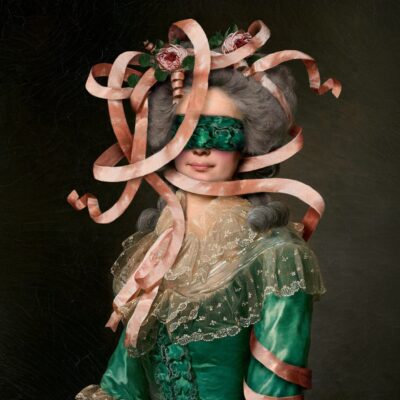
EFHA World 26.05.2025
30.12.2021
fashion historytextile history
The best way to start the new year: a guest text by Dr. Adelheid Rasche, Senior Curator of Textiles, Dress and Jewellery at the Germanisches Nationalmuseum, Nuremberg, Germany
Black velvet, rich embroidery with passementerie, glass beads, glass stones and a feather trimming in the open front: this decorative evening cape dating from ca. 1895 has been acquired by the Germanisches Nationalmuseum in 2019 from a family estate in Southern Germany. Like most of the surviving velvet capes, its colour is black, as its main use was with evening wear for theatre, concerts or dinner parties.
Capes – often called sortie, mantille or mantelet – have become the common overgarments for ladies since the 1860s. Due to the wide shape of the fashionable dress sleeves, it wouldn’t be possible to wear overgarments like coats or jackets with sleeves. When laid out, the cape forms 2/3 of a circle with ca. 400 cm of circumference at the edge. On the front, two separate cut-outs allowed the wearer to push the arms through the cape.
Construction details of the cape give hints to its production with semi-finished products, like the lining, and to the partly use of the sewing machine for attaching the embroidery and for the main seams. It is impossible to state whether the cape was made by a talented seamstress for an individual female client or if it is an exquisite example of a ready-to-wear overgarment. Especially overgarments like capes and loose-fitting coats have been produced in great number by the ready-to-wear industry of the late 19th century.
A detailed study with more images has been published in German by fashion historian Anna Behrend, p.11-15: https://www.gnm.de/fileadmin/redakteure/Kulturgut/2021/GNM-Museum-Kulturgut_2021_III.pdf